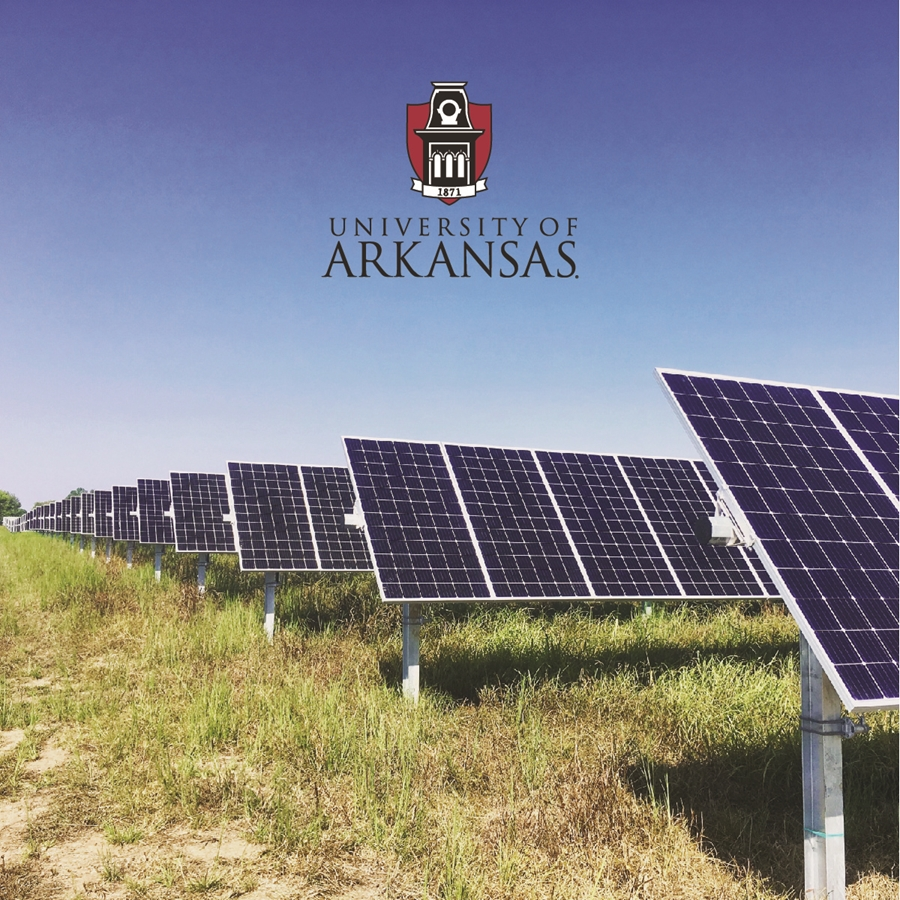Harnessing the Sun: The Rise of Solar Energy in Little Rock
Basking in a generous quota of sunny days, Little Rock, Arkansas, emerges as a gleaming epicenter for solar energy, strategically positioned to harness the vivacious rays of the sun. With a climate that boasts hot, sunny summers and a fair share of light even during the milder winters, Little Rock offers an inviting canvass for solar panels to capture and convert sunlight into a resplendent bounty of clean energy. Amidst the backdrop of the Arkansas River, photovoltaic arrays are increasingly dotting the landscape, from urban rooftops to rural fields.
Little Rock's ascent in the solar hierarchy is not merely by chance but by strategic progressiveness, aligned with state policies that encourage renewable energy investment. The Arkansas Renewable Energy Development Act of 2001, coupled with net metering rules revamped in 2020, cement the city’s position by incentivizing both individuals and businesses to contribute to the growth of solar power. Considering these geographic and policy tailwinds, the solar industry in Little Rock is illuminating a path towards an electrifying future where the state's natural solar resources are optimally exploited, steadily shedding its erstwhile reliance on traditional fossil fuels. This zestful city is swiftly becoming a beacon of solar innovation, setting a dynamic template for other cities in the American South to emulate.
Get Solar Quote in Little Rock, Arkansas
Solar Landscape in Little Rock
Basking under the abundant Arkansas sun, Little Rock emerges as a sun-soaked haven, ripe for solar proliferation. The city revels in approximately 217 sunny days yearly, surpassing the U.S. average and laying a luminous foundation for solar energy harvest. With an average solar irradiance of about 5.2 kWh/m²/day, Little Rock floats in the upper echelon of solar gain territories in the United States, hinting at robust potential for photovoltaic systems to thrive. In the throes of summer, when the sun beats down with a feverish intensity, this figure can even spike, and solar panels bask in the sheer exuberance of uninterrupted solar banquet, deftly converting it into clean electricity.
Arkansas's solar-friendly regulations further amplify this advantage. Net metering policies permit residential and commercial users to receive credit for excess energy their solar installations send back to the grid, a fine-tuned symphony of give-and-take that benefits the individual and the community. Additionally, the state's Renewable Energy Development Act of 2001, with its incentives, vaults Little Rock into an even more enviable position for solar investments. The convergence of high solar irradiance and enabling legislation propels Little Rock into the spotlight as a solar champion, setting the stage for a green revolution under the Arkansas sun.
Economic and Environmental Impact
In a radiant wave of innovation and proactive environmental stewardship, Little Rock, Arkansas, has embraced solar energy, sparking both economic growth and a greener cityscape. Economic rejuvenation flows from the solar industry, as local job creation surges with the installation of photovoltaic systems, fundamentally altering employment landscapes. Companies like Seal Solar and Scenic Hill Solar are not only bright spots in the local economy but also catalysts for statewide economic diversification, drawing in green-tech investment and offering Arkansans a slice of the clean energy job market pie. Accelerated by the Arkansas Renewable Energy Development Act of 2001, which set the framework for net metering, local businesses and homeowners alike can receive credits, reducing bills and spurring further solar adoption.
Moreover, solar energy’s environmental dividends in Little Rock cannot be overstated. By pivoting from traditional power sources, which often guzzle water for cooling, to the more arid-friendly solar panels, the city trims its water footprint. Not to be overshadowed, as solar panels silently harvest the sun's energy, they curtail the noxious ballet of air pollutants - a dance previously choreographed by coal and gas power plants. This transition is embellished with the state's abundant sun exposure, ensuring that solar panels operate at optimal efficiency. The result is a compelling reduction in greenhouse gas emissions, painting a vivid picture of Little Rock as an environmental vanguard in the heart of the Natural State.
Solar Initiatives and Growth in Little Rock
The zest for solar energy in Little Rock, Arkansas, crackles with renewed vigor owing to a bouquet of state and local policies that are as inviting as they are advantageous. Arkansas’s foray into the solar fray is anchored by the Arkansas Renewable Energy Development Act of 2001, which set the stage for incentives and tax credits that are nothing short of electric. More recently, the Arkansas Public Service Commission has implemented net metering rules, empowering consumers to spin their meters backwards and potentially bask in bill credits — a savvy cash-back for surplus sun juice!
Little Rock-specific programs, like the Property Assessed Clean Energy (PACE) financing, allow businesses and residents to invest in solar installations with palpable financial buoyancy. The economics are sweetened by the fact that Arkansas also steers clear of punitive solar panel taxes, ensuring the financial forecast is as sunny as the skies!
Indeed, the River Market District now glimmers with photovoltaic promise, hosting one of the largest municipal solar on-site generation facilities in the state. This 2,000-panel powerhouse harvests an ocean of photons, signifying an audacious step within Little Rock's journey towards a shimmering solar future. Toss in the 81-megawatt Stuttgart Solar Energy Center, which delivers a clean energy bonanza to the Arkansas grid while casting a green-glinted luster across rice fields, and you have a riveting testament to Little Rock's solar saga that’s as hot as the surface of the sun itself.
Challenges and Opportunities
Navigating the clean energy landscape in Little Rock, Arkansas, presents a unique mosaic of challenges tinged with promising opportunities. On the challenge spectrum, the integration of solar power into the existing grid infrastructure pulsates at the heart of the dilemma. Arkansas's traditional reliance on fossil fuels means that the grid is primed for stable energy inputs, unlike the variable nature of solar, which can oscillate with the whims of the weather. Moreover, policy hurdles erect barriers as robust as a summer thunderstorm cloud. For instance, the state’s net metering policy, though recently updated, still operates under caps and certain limitations, potentially stifling the growth of residential and commercial solar installations.
Yet, with every challenge comes a silver lining, a solar array of opportunities, so to speak. Arkansas’s climate offers abundant sunshine, particularly in the summer months, which can provide immense solar generation potential. The state's commitment to renewable energy is also gaining momentum, with projects like the 81-megawatt Stuttgart Solar Energy Center positioning Arkansas on the clean energy map. Additionally, the advent of more sophisticated battery storage solutions could mitigate grid integration issues, unlocking doors to a future where solar energy doesn’t just trickle but flows vigorously through Little Rock, harnessing the state’s 4.7 average peak sunlight hours to illuminate the path toward sustainable energy practices. With a confluence of technology advancement and policy tailwinds, Little Rock could pivot from a state of solar challenges to a beacon of solar prosperity.
Community Engagement and Education
As solar enthusiasm skyrockets in Little Rock, Arkansas, the city is effervescent with community solar programs, shimmering as a beacon of renewable energy adoption. Here, residents don’t merely install solar panels; they become solar evangelists, engaged in a sunlit renaissance. The state's regulations, particularly the Arkansas Public Service Commission's net-metering rules, augment this cultural shift by making it financially feasible for homeowners and businesses to contribute to and benefit from community solar farms. These shared solar arrays are a boon for those who, perhaps due to shaded rooftops or rental constraints, cannot install individual systems.
The city's radiant efforts don’t stop with hardware; education is a critical component. A partnership between local utilities and nonprofits has spawned workshops that dissolve the perplexities of photovoltaics into common sense. For instance, the Arkansas Renewable Energy Association (AREA) provides workshops that illuminate the science and economic benefits of solar energy, while municipal programs offer tours of local solar installations, catalyzing a grassroots understanding of the technology. Echoing through these initiatives are the benefits of solar energy reflected in lower utility bills and a reduced carbon footprint, fostering a community bonded by the power of the sun. These initiatives aren't just nurturing solar literacy; they're sculpting a cityscape where every watt tells a story of empowerment and collective commitment to a greener tomorrow.
Conclusion
Little Rock, Arkansas has embarked on a scintillating solar expedition, carving out its identity as a beacon of renewable energy in a region historically steeped in traditional fuel sources. Arkansas’s net metering policy up to a threshold of 1 MW for solar systems, alongside a state tax credit paralleling the federal Investment Tax Credit (ITC), has fueled a photovoltaic renaissance in Little Rock. The sun-drenched city boasts an average of 217 sunny days per year, surpassing the national average and creating an ideal tableau for solar energy production. The recent advancements, such as the installation of a 12-megawatt solar array at the Port of Little Rock, signal a robust commitment to green energy. This pivotal move not only slashes the city's carbon footprint but also cascades into a flurry of economic benefits, including job creation in the solar industry. The burgeoning solar scene in Little Rock stands as a testament to how policy and climate can converge to fan the flames of a solar revolution. By harnessing its sunny disposition—both meteorologically and in its embrace of solar power—Little Rock sets a pulsating precedent for other sunny cities to follow suit, illustrating that the pivot to photovoltaics is not just possible but palpably profitable and environmentally prudent.





Comments
Post a Comment